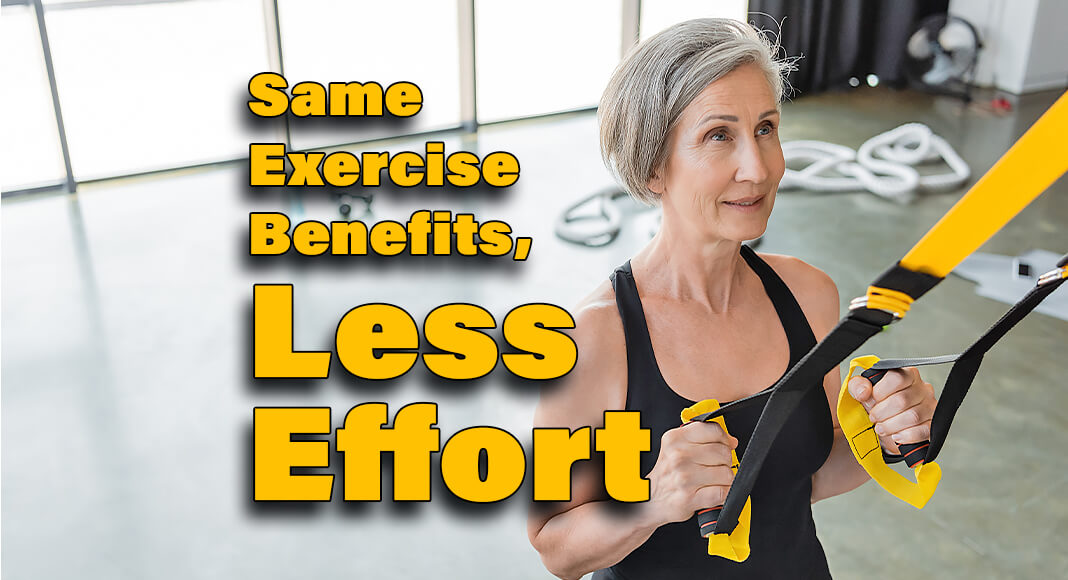
Mega Doctor News
Newswise — LOS ANGELES – A new study from the Smidt Heart Institute at Cedars-Sinai shows there is a gender gap between women and men when it comes to exercise.
The findings, published in the Journal of the American College of Cardiology (JACC), show that women can exercise less often than men, yet receive greater cardiovascular gains.
“Women have historically and statistically lagged behind men in engaging in meaningful exercise,” said Martha Gulati, MD, director of Preventive Cardiology in the Department of Cardiology in the Smidt Heart Institute at Cedars-Sinai, the Anita Dann Friedman Chair in Women’s Cardiovascular Medicine and Research and co-lead author of the study. “The beauty of this study is learning that women can get more out of each minute of moderate to vigorous activity than men do. It’s an incentivizing notion that we hope women will take to heart.”
Investigators analyzed data from 412,413 U.S. adults utilizing the National Health Interview Survey database. Participants between the time frame of 1997 to 2019—55% of whom were female—provided survey data on leisure-time physical activity. Investigators examined gender-specific outcomes in relation to frequency, duration, intensity and type of physical activity.
“For all adults engaging in any regular physical activity, compared to being inactive, mortality risk was expectedly lower,” said Susan Cheng, MD, MPH, the Erika J. Glazer Chair in Women’s Cardiovascular Health and Population Science, director of the Institute for Research on Healthy Aging in the Department of Cardiology in the Smidt Heart Institute, and senior author of the study. “Intriguingly, though, mortality risk was reduced by 24% in women and 15% in men.”
The research team then studied moderate to vigorous aerobic physical activity, such as brisk walking or cycling, and found that men reached their maximal survival benefit from doing this level of exercise for about five hours per week, whereas women achieved the same degree of survival benefit from exercising just under about 2 1/2 hours per week.
Similarly, when it came to muscle-strengthening activity, such as weightlifting or core body exercises, men reached their peak benefit from doing three sessions per week and women gained the same amount of benefit from about one session per week.
Cheng said that women had even greater gains if they engaged in more than 2 1/2 hours per week of moderate to vigorous aerobic activity, or in two or more sessions per week of muscle-strengthening activities. The investigators note their findings help to translate a longstanding recognition of sex-specific physiology seen in the exercise lab to a now-expanded view of sex differences in exercise-related clinical outcomes.
With all types of exercise and variables accounted for, Gulati says there’s power in recommendations based on the study’s findings.
“Men get a maximal survival benefit when performing 300 minutes of moderate to vigorous activity per week, whereas women get the same benefit from 140 minutes per week,” Gulati said. “Nonetheless, women continue to get further benefit for up to 300 minutes a week.”
Christine M. Albert, MD, MPH, chair of the Department of Cardiology in the Smidt Heart Institute and the Lee and Harold Kapelovitz Distinguished Chair in Cardiology, says concrete, novel studies like this don’t happen often.
“I am hopeful that this pioneering research will motivate women who are not currently engaged in regular physical activity to understand that they are in a position to gain tremendous benefit for each increment of regular exercise they are able to invest in their longer-term health,” said Albert, professor of Cardiology.
Other Cedars-Sinai authors include Tzu Yu Huang, MSc; Alan Kwan, MD; David Ouyang, MD; and Joseph Ebinger, MD. Other authors include Hongwei Ji, MD; Kaitlin Casaletto, PhD; Kerrie L. Moreau, PhD; and Hicham Skali, MD, MSc.
Funding: This work was supported in part by NIH grants K23HL153888, K23AG058752, R21HL156132, R01HL142983, R01HL151828, R01HL131532, R01HL143227, R01AG072475, U54AG062319, and U54AG065141, and the Erika J Glazer Family Foundation, National Key R&D Program of China (2022YFC2502800), National Natural Science Foundation of China (82103908), Shandong Provincial Natural Science Foundation (ZR2021QH014), Shuimu Scholar Program of Tsinghua University, and National Postdoctoral Innovative Talent Support Program (BX20230189).
Read more from the Cedars-Sinai Blog: High Blood Pressure: How to Recognize and Treat It









